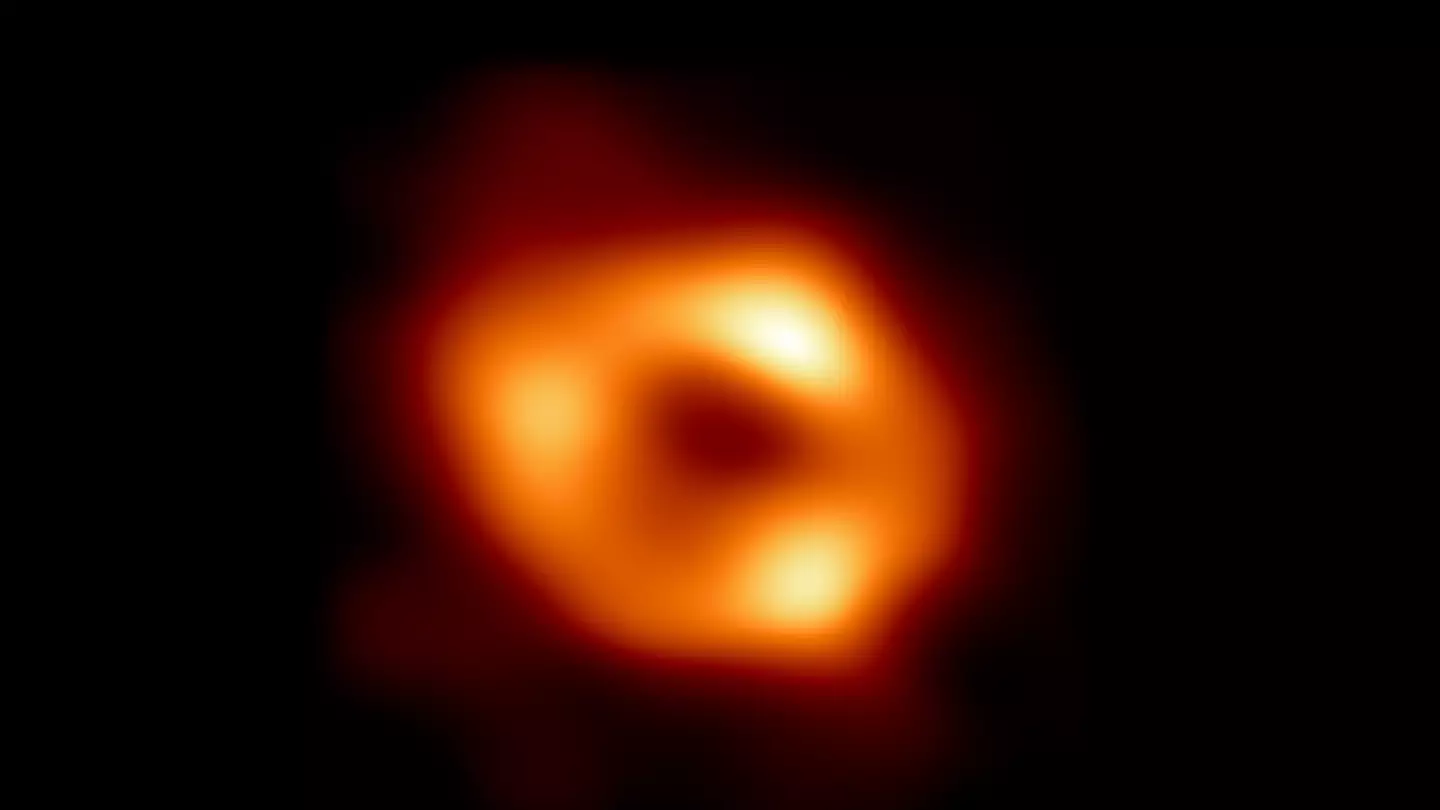
For the first time ever, scientists have captured an image of a black hole in the middle of our galaxy.
The breakthrough image was captured by the Event Horizon Telescope (EHT), with an international team working with eight synchronised radio telescopes around the globe to capture the picture.
The image, which shows a glowing circle of orange and yellow light surrounding a dark middle, provides the first-ever visual proof of a black hole sitting at the centre of our Milky Way galaxy.
The supermassive black hole - known as Sagittarius A* - is located approximately 27,000 light-years away from Earth and is around 4.3 million times the mass of the Sun.
Advert
Scientists believe the breakthrough finding will hold invaluable clues about the mysteries of the universe, with black holes thought to reside at the centre of most galaxies.
This is the second major breakthrough for the EHT collective in recent years, with scientists discovering another black hole in 2019 called M87*.
M87* lies at the centre of a more distant Messier 87 galaxy.
Co-Chair of the EHT Science Council Sera Markoff said the discovery of the two black holes will give astrophysicists the chance to form a greater understanding of how our universe works.
Advert
"We have two completely different types of galaxies and two very different black hole masses, but close to the edge of these black holes they look amazingly similar,” Professor Markoff said.
But there was a significant difference in capturing the images of the two black holes said EHT scientist Chi-kwan Chan.
The scientist from Steward Observatory and Department of Astronomy and the Data Science Institute of the University of Arizona said: "The gas in the vicinity of the black holes moves at the same speed — nearly as fast as light — around both Sgr A* and M87*.
"But where gas takes days to weeks to orbit the larger M87*, in the much smaller Sgr A* it completes an orbit in mere minutes.
Advert
"This means the brightness and pattern of the gas around Sgr A* was changing rapidly as the EHT Collaboration was observing it — a bit like trying to take a clear picture of a puppy quickly chasing its tail."
The one image of Sagittarius A*, while an incredible scientific breakthrough, is the result of work by more than 300 researchers from 80 institutes around the world that make up the EHT Collaboration.
The global team worked continuously for five years using supercomputers to combine and analyse data to come to this discovery.